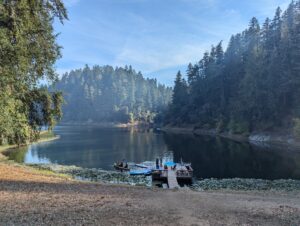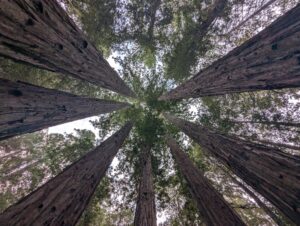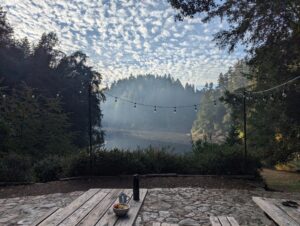FOREST FLASH
October 2024
In Pacific Forest Trust’s e-newsletter, Forest Flash, we send you the most recent PFT news and updates on forests, clean water, climate, and wildlife. Subscribe here.
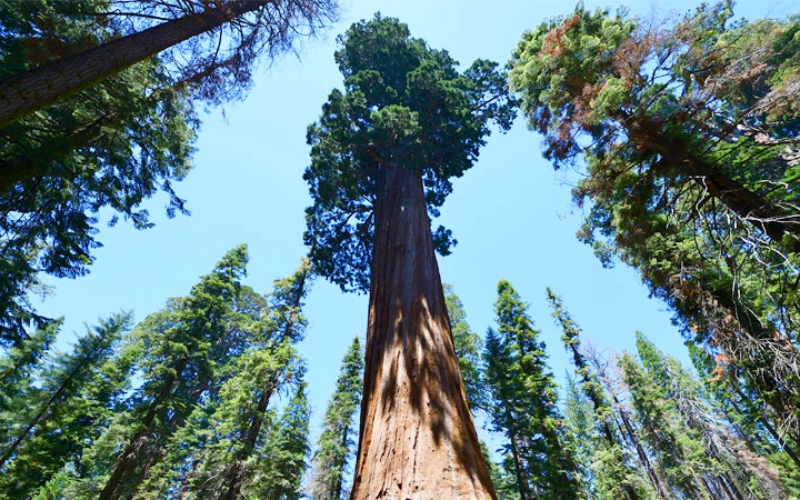
Happy Halloween! And, no tricks here, only treats: As California approaches the November election, voters are set to decide on the historic $10 billion Safe Drinking Water, Wildfire Prevention, Drought Preparedness, and Clean Air Bond Act of 2024 (Prop 4). With just one week to go, this climate bond could become the state’s largest-ever investment in climate resilience. Passing Prop 4 would provide critical funding to implement the state’s targets for conserving natural and working lands, as established through the AB 1757 Expert Advisory Committee, for our climate goals. These lands hold immense potential for natural carbon sequestration.
The bond allocates funds across several critical areas, including $3.8 billion for increasing the state’s water security, $1.5 billion for wildfire management and forest resilience, and $1.2 billion for biodiversity conservation and nature-based climate solutions. PFT has been an influential voice in shaping this legislation, leveraging our experience in both climate and fire resilient forest and watershed management and drafting and sponsoring complementary conservation and climate regulation bills.
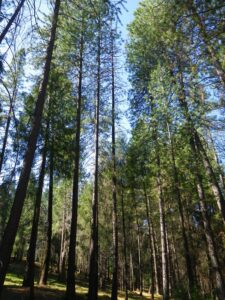
Conserved and well-managed healthy forests, such as this one, are powerful and relatively untapped tools in the fight against climate change.
Additionally, Prop 4 aligns with California’s ambitious 30×30 campaign, aiming to protect 30% of state lands and waters by 2030, further emphasizing the role of natural systems in addressing climate change.
The Climate Bond continues to have favorable polling—60% support—as well as a swath of support from the likes of the Los Angeles Times, the Sacramento Bee, and the San Francisco Chronicle. Supporters reference studies showing that for every dollar invested in climate adaptation, $6 is saved in disaster mitigation costs.
Passing Prop 4 would enable implementation of California’s natural climate solutions and conservation, marking a crucial step toward a more resilient future. In just a week, we urge support for this bond measure, as it represents a remarkable opportunity to advance California’s climate resilience and conservation efforts to protect the state’s irreplaceable native fish, wildlife and plant heritage—and enlists our most immediate, practical, and scalable tool to fight climate change.
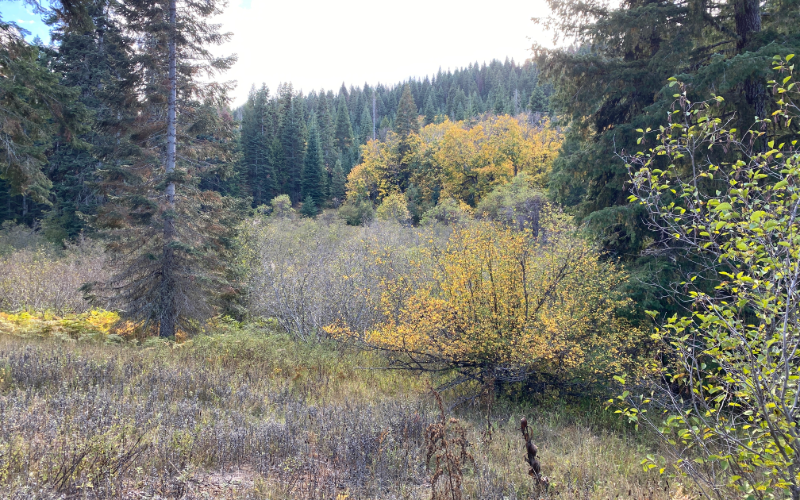
Though the black-tailed jackrabbit might seem like a common sight across the western U.S., PFT is paying attention to its presence at the Mount Ashland Demonstration Forest (MADF). Why? Jackrabbits, as keystone prey species, provide critical insights into habitat health and connectivity, supporting a web of predators like golden eagles, bobcats, and foxes. By studying the presence and movement of these jackrabbits, we gain valuable information about the ecological relationships within PFT’s conserved landscapes, such as the diverse habitat types across MADF, where meadows provide vital prey habitat.
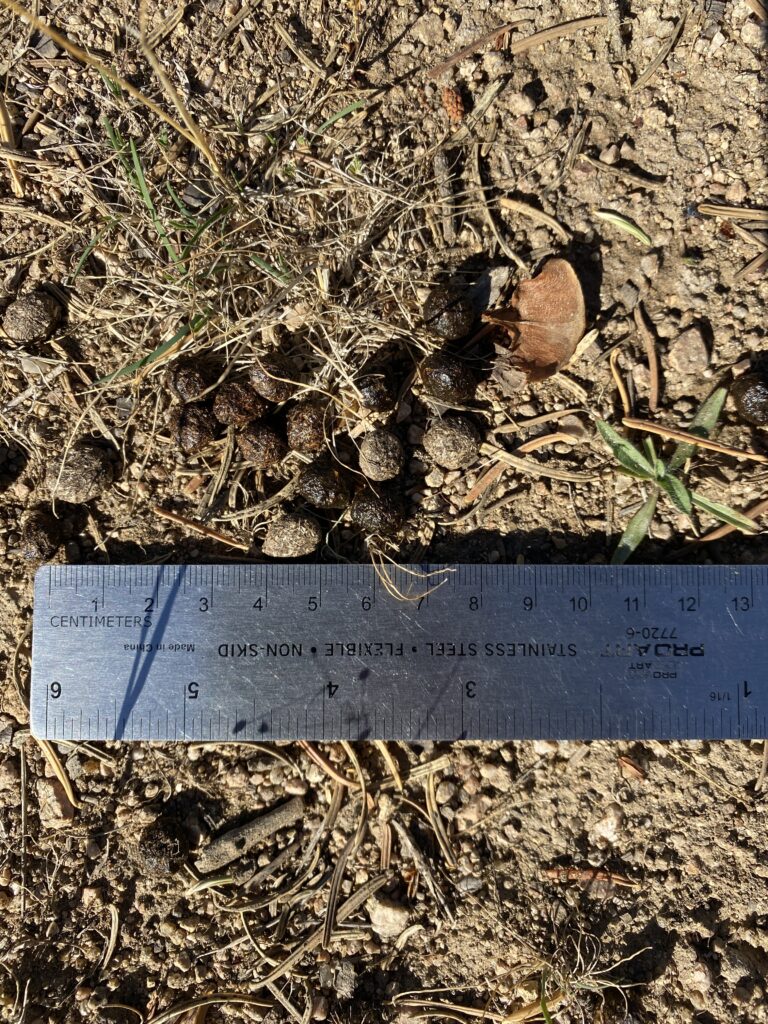
black-tailed jackrabbit scat found on MADF.
Situated in southwestern Oregon’s mid-elevation conifer zone, MADF is a highly diverse mixed-conifer ecosystem that will yield valuable insights into wildlife behavior and habitat use in the region. Recent wildlife monitoring efforts have focused on scat analysis, providing essential data on species’ presence and movement patterns. “For the naturalist,” says PFT’s Stewardship and Outreach Associate Lyndia Hammer, “scat reveals the presence of animals with crepuscular [twilight and dawn], nocturnal, or other secretive behaviors that make wild creatures difficult to observe directly.”
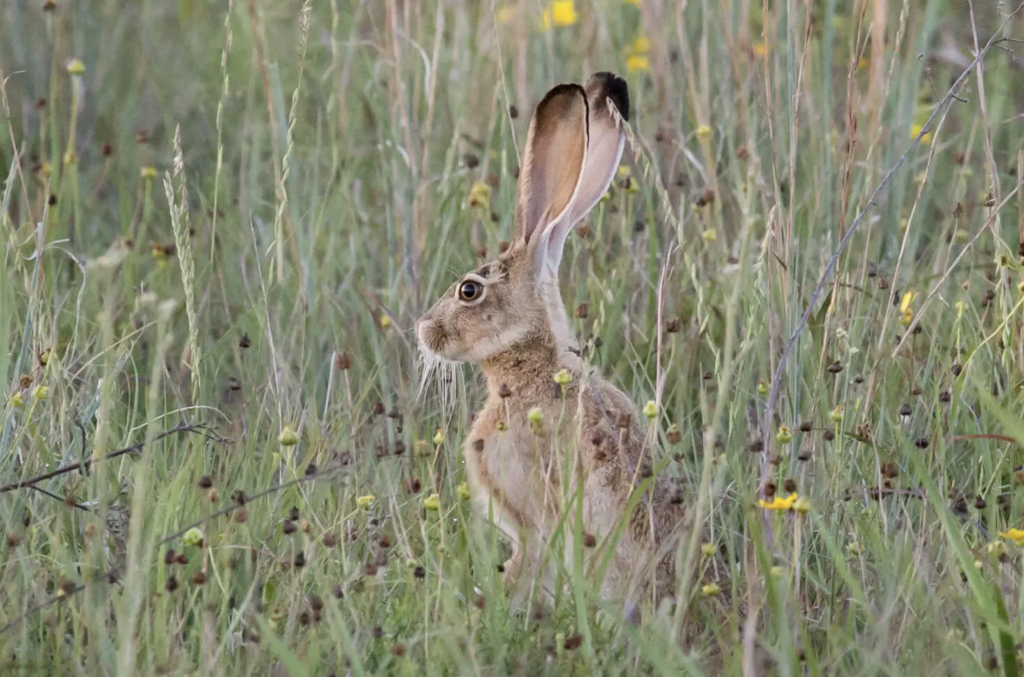
black-tailed jackrabbit.
MADF’s mosaic of habitats—including north-slope conifer stands interspersed with wet and dry meadows and chapparal shrublands which the jackrabbits use—supports a diverse range of species, from gray wolves to mountain lions to northern spotted owls to black bears. Recent scat discoveries within these transitional zones have confirmed black-tailed jackrabbits’ presence, underscoring the MADF’s role in supporting this ecologically significant species. Jackrabbits’ adaptability is particularly noteworthy, with individuals traveling between open grasslands and shrub cover, a behavior documented through scat distribution up to 200 yards from protective cover. This movement aligns with MADF’s management objectives, which prioritize restoring and maintaining natural habitat diversity and connectivity.
These findings contribute to our understanding of wildlife movement patterns and habitat utilization within managed forest systems, offering valuable insights to guide future conservation strategies and forest management practices at Mount Ashland and throughout the Pacific Northwest.
Please consider a donation to the Pacific Forest Trust. Your help—in all capacities—makes our work possible. Thanks for supporting us as we support forests!
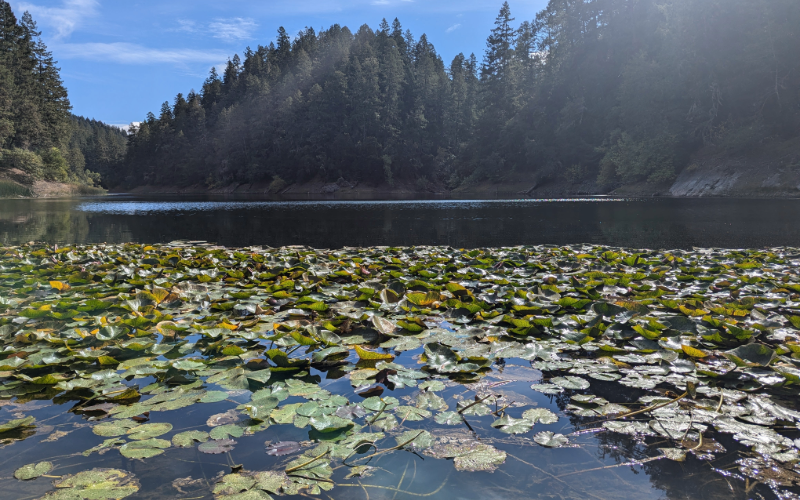
This October, the PFT team came together for our annual staff retreat. The gathering took place at one of PFT’s earliest conservation successes: the Leonard Lake Reserve in Mendocino County, a beautiful property with old growth redwood, well developed mature Douglas fir and mixed hardwood, forests and ridge top meadows, and the county’s only natural lake, which was one of our first Working Forest Conservation Easement (WFCE) projects. It was wonderful to visit the property as a whole organization and see the terrific management for fire and habitat resilience that has been done there.
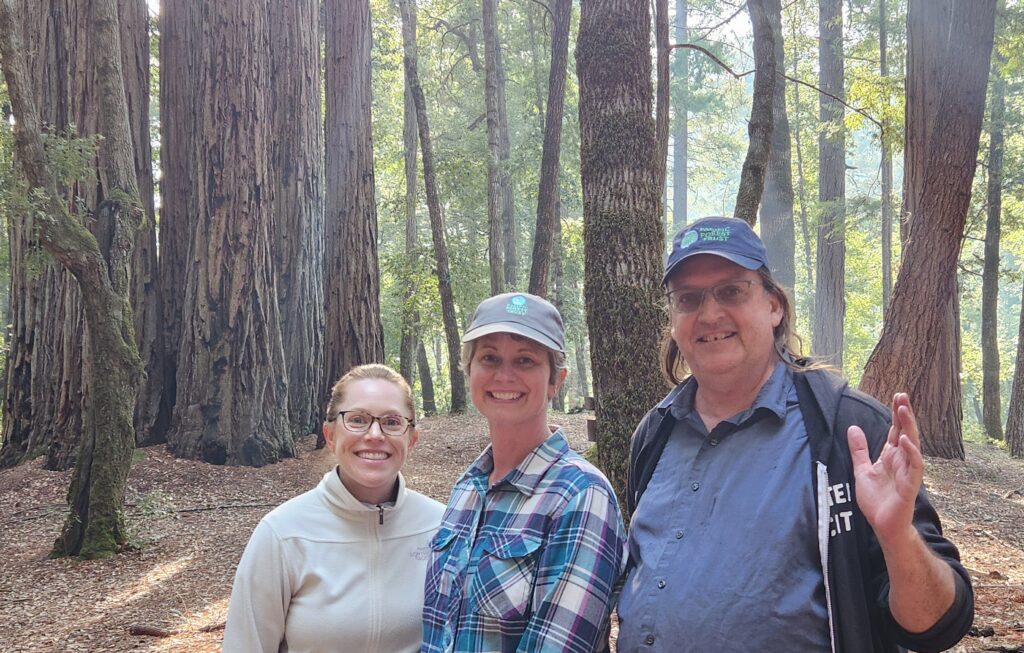
Senior Associate of Engagement Mollie Moscony; Major Gifts Officer Jennesa Datema; Director of Development Kevin Connelly
Our staff, typically spread between the Oregon and California offices, spent two energizing days reconnecting and planning for the future. The retreat offered a perfect opportunity for us to reflect on PFT’s extraordinary growth, not least our increased influence in shaping both climate resilience and “good fire” initiatives. We also discussed how to best leverage our growing visibility in internationally read publications such as the New York Times, The Economist, and others.
Though our daily work varies greatly—from legislative advocacy to forest management to organizational operations—the retreat reminded us of how these diverse roles come together in service of our mission. The team spent valuable time mapping out several ambitious upcoming projects and strategizing ways to build on our recent momentum in forest conservation and climate action.
As we look ahead, we’re deeply proud of our team’s accomplishments over the past year and energized by the bold goals we’ve set for ourselves. The chance to gather as both colleagues and friends at such a historically significant PFT conserved property (and a wonderful retreat venue!) made this year’s retreat especially meaningful.
- PFTers on Leonard Lake
- A beautiful grove on the property
- Coffee with a view!
Gallery photos by Renata Zakhvatkina
ICYMI
In case you missed it (ICYMI), here are some other exciting things PFT has been involved in lately!
- PFT President Laurie Wayburn recently gave a talk at Yale University titled “Restoring and Maintaining Mature and Old Private Forests in the US,” which you can view here.
- PFT is the fiscal agent for Michael Taylor, who discovers some of the world’s tallest trees. “His current project, with the Pacific Forest Trust” states this recent SF Gate article, is to identify the 50 tallest individual trees of each of the West Coast’s 10 tallest tree species.”
- For our Tri-state friends, there will be a screening of Beyond the Trees, the award-winning film about our innovative work on the van Eck forests, on November 17th at 2pm. Reserve your tickets here.

